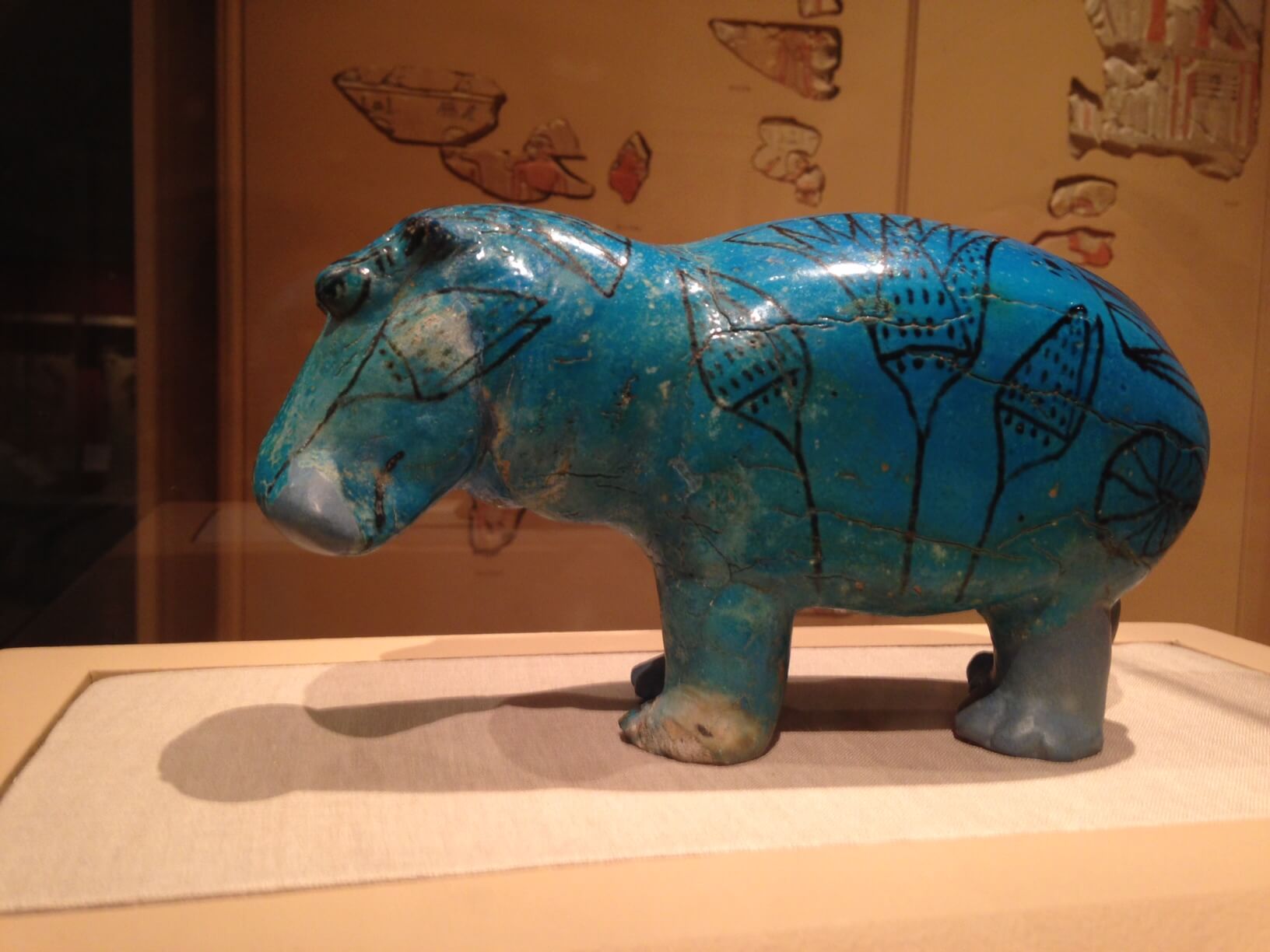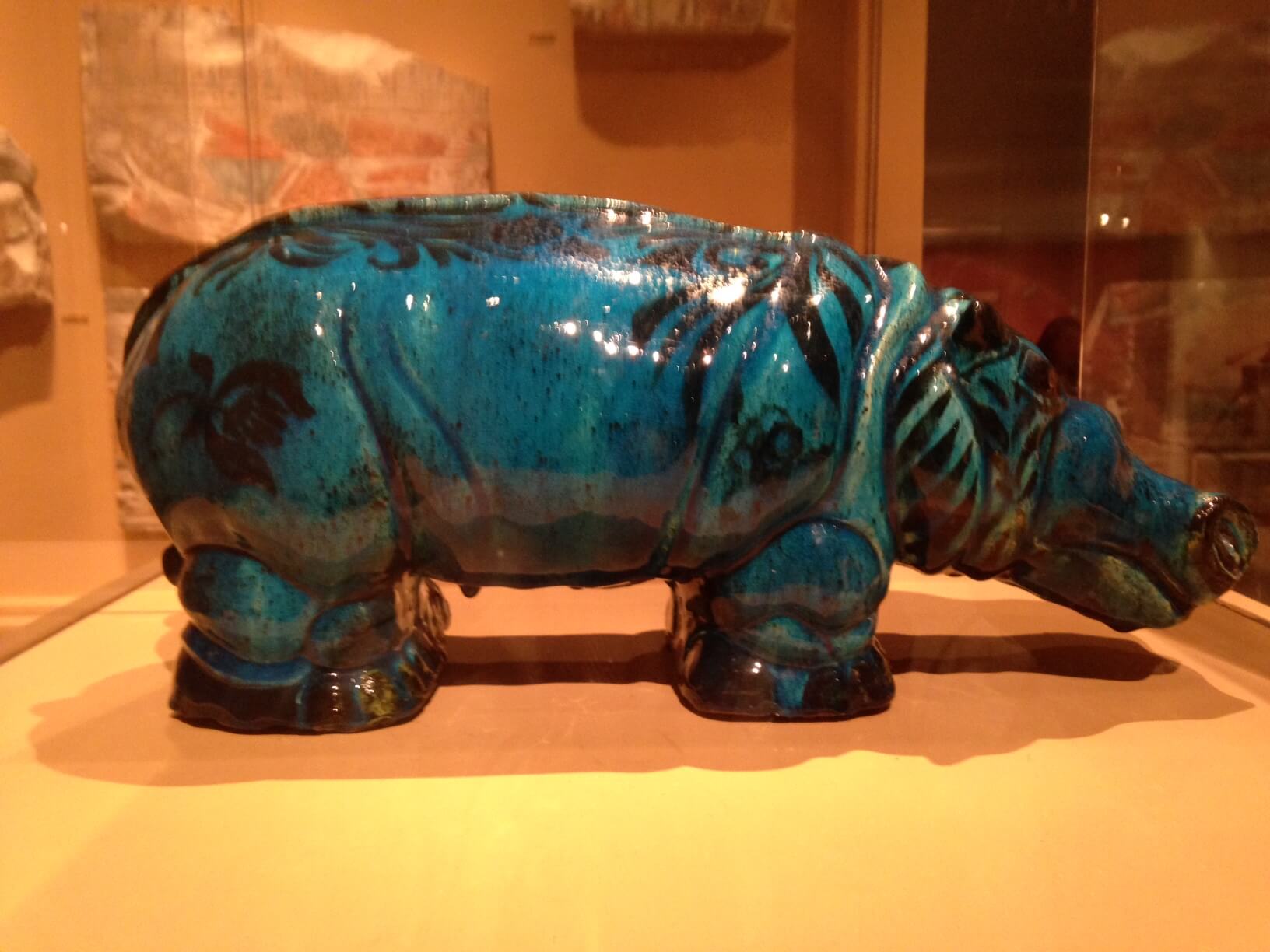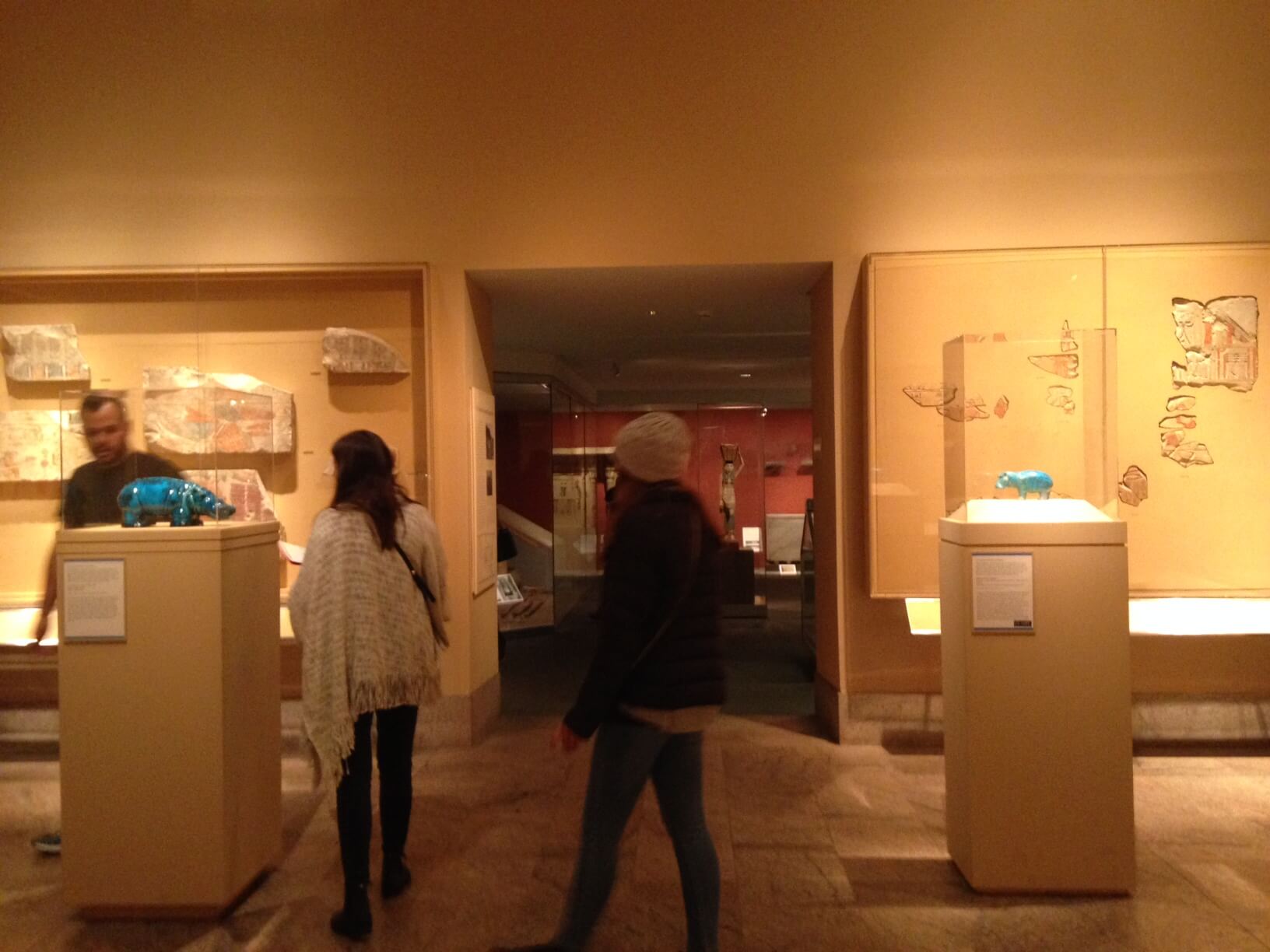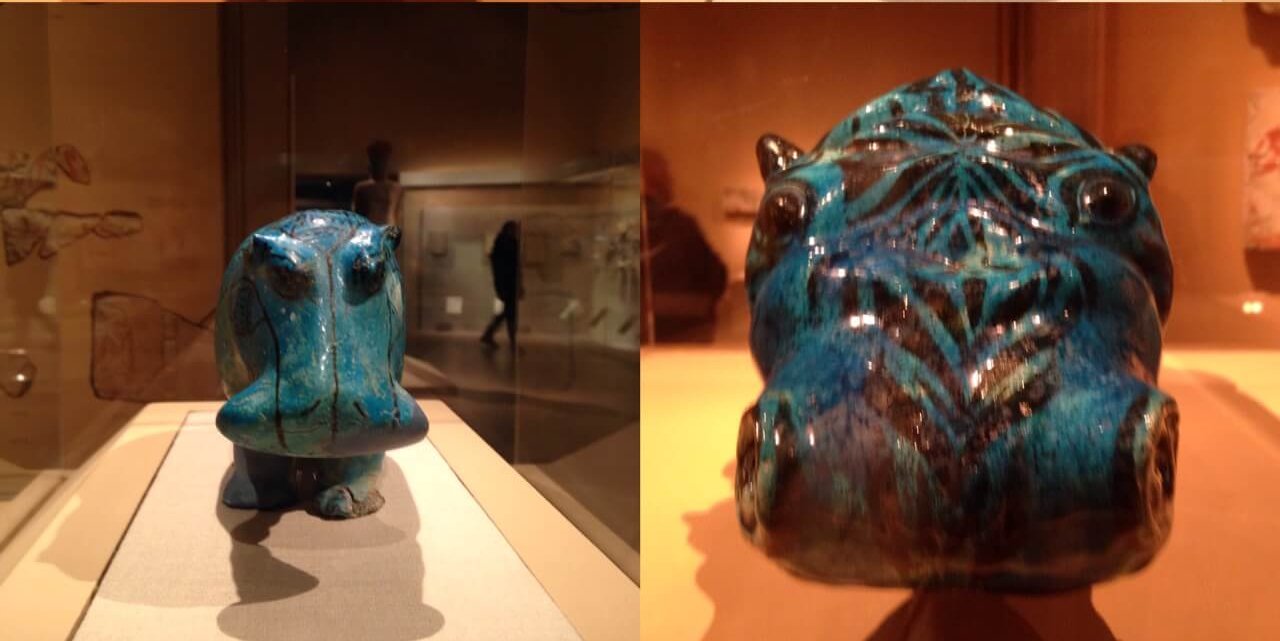After four thousand years, William the ancient Egyptian hippopotamus has a new friend!
William is a small blue faience statuette unearthed from an ancient Egyptian tomb. He is one of many such hippo statues found in ancient Egyptian tombs – he has siblings in the Louvre and Brooklyn Museum, among others – but his fame has certainly exceeded the others. They are all made of blue glazed faience (ceramic) with black markings of Nile plants, so they look like they have just emerged from the river covered in vegetation. Many of these figurines were found with their feet broken off, and scholars think this was to protect the tomb occupants from the dangerous power of this massive animal while still benefiting from its presence. In the pictures, you can see how the feet are replacements. He was purchased by the Met in 1917, quickly became a crowd favorite, and was soon adopted as the museum’s unofficial mascot. He now appears on tee shirts, magnets, postcards, and even flash drives available in the Met Store. (I own one of almost everything.)

William’s new friend is another blue ceramic hippo – this one made by American artist Carl Walters in 1936 and purchased by the Met last year. Walters’s hippo strongly resembles William, but he’s no mere copy. Larger, more detailed, and with intensified markings, he’s an appreciative, modern homage to an old favorite. To celebrate William’s one hundredth anniversary at the museum, the Met is displaying the two statues together in the ancient Egyptian wing. I wonder what Walters would say if he could see his own hippo displayed beside the one he spent so much time studying. (Unfortunately, the current ancient Egyptian galleries are not the same ones that Walters would have visited in the 1930s.)

It’s pretty amazing to think that an animal figurine sculpted and buried four millennia ago still feels so immediate and accessible to us today. I think this speaks greatly to the power art has across time. Of course, our modern view of him as a cute creature is probably very different from the ancient Egyptians’, since they were familiar with dangerous wild hippos, and we are generally not. But the important thing is that we still feel connected to this very old little statue.

Conversation Between Two Hippos runs through April 2018, but I don’t think either one of these guys is going far even after that. As my mom teased me about my hippo obsession, “clearly, William is a hit with children of all ages”. He definitely is, and I have no trouble imagining that his new friend will become an enduring favorite as well. Now, he just needs a name…
Learn everything you could ever want to know about William here on the Met’s website.

